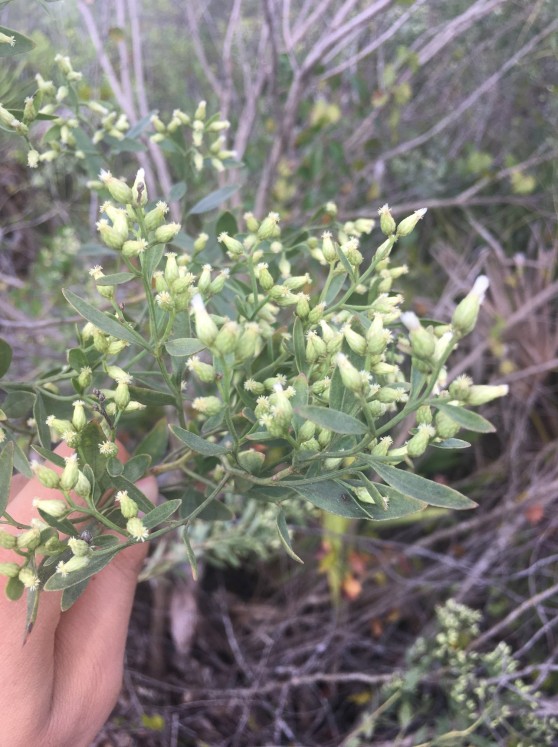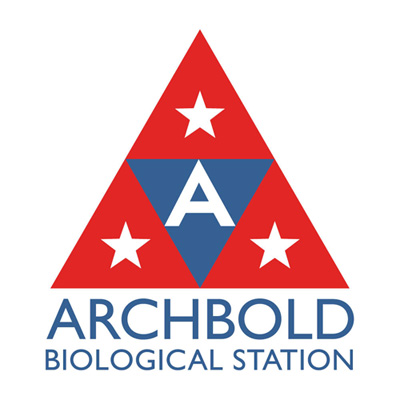
A Saltbush plant, native to Florida. Photo by Toby Shaya
When visiting natural history museums, one might be accustomed to seeing skeletons and replicas of animals towering overhead. Or maybe long rooms with dioramas, or models, depicting life from times long past and habitats all over the world. Or possibly even larger rooms offering interactive displays designed to learn about animals, big and small. For children and adults alike, Archbold Biological Station combines all that this vaunted institution has to offer as well as access to a pristine but endangered bit of Florida’s natural past, the Florida scrub. This is literally ‘natural history’ at its finest. Visitors learn about South Central Florida’s unique natural habitats and the science that goes on at the Station. Toby Shaya experienced this for the first time this past fall as a new research intern.
“I have been helping to digitize the specimen data for Archbold’s extensive collection of insects. Moreover, I had the chance to conduct a small-scale research project in the field and communicate this knowledge to a wider audience,” he says. Because of his interest in insects and their interactions with flowers, Toby decided to look at which species of insects visited the flowers of saltbush plants, a woody shrub native to Florida
Toby explained that “Unlike most flowering plants that you may be familiar with, the female and male parts of saltbush flowers reside on separate plants, making all of the flowers on one individual plant either completely male or female, depending on the sex of the individual. Male flowers offer pollen and nectar, while female flowers only offer nectar. This disparity in available resources to a potential insect visitor might lead to a difference in who visits male or female flowers.” While he was an intern here in November, he chose to investigate this aspect of the flower-insect associations for saltbush. On top of this field project, Toby participated in many other aspects of research on the station: helping to track gopher tortoises, census scrub jays, and count new individuals of Eryngium plants.
When walking into the ‘Bug Lab’ at Archbold Biological Station, one becomes immediately aware of tall, green cabinets adorned with detailed illustrations of ants, beetles, and other insects skillfully hand-drawn by Mark Deyrup, the now-retired (but still very active) head of the Entomology Lab here at Archbold. Toby worked with these collections as part of his internship.
“Each specimen has a label associated with it that is chock full of vital information telling what species it is (if known), who caught it, where it was caught, when, and how,” he said. There might also be other relevant details that help scientists get a fuller understanding of the organism’s place in the broader ecosystem.
Take, for example, one of the insects he caught this past November: Augochlorella aurata, a green metallic sweat bee that visited a flower on a female saltbush plant. Its label says that it was caught by Toby Shaya, on November 13th, at Archbold Biological Station (with county, state, and country information), and from a female saltbush plant.
While this information is important, Toby emphasized that “other specimens may have more information depending on collector’s study, but any and all details included on a pinned label are important. Without this information, the specimen is just a data point floating in space, with no time, location, or other identifying information to anchor it down.”
Going back to his bee example, future scientists who visit Archbold Biological Station can reference this specimen when asking questions of scientific importance: During what range of dates was this bee visiting flowers? What flowers does it visit? When is saltbush in bloom and how might this bloom period have changed over time? What are the ranges of saltbush and this species of bee? How might they have changed over time? With well-curated collections like the one at Archbold, scientists can ask questions like these and many others on all scales of ecological importance.
What did Toby get from trekking the station’s sandy trails? “I followed my passion for natural history and insects, developed my field skills, and matured as a burgeoning scientist. Being an intern at the Archbold Biological Station has allowed me to do all of those things and so much more.”
Written by Toby Shaya

An example of some of the insects in the Archbold Collection. Photo by A. Grimes
